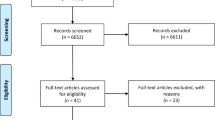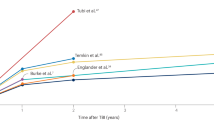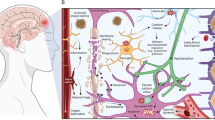Abstract
Valid modeling of traumatic brain injury (TBI) requires accurate replication of both the mechanical forces that cause the primary injury and the conditions that lead to secondary injuries observed in human patients. The use of animals in TBI research is justified by the lack of in vitro or computer models that can sufficiently replicate the complex pathological processes involved. Measures to reduce nociception and distress must be implemented, but the administration of anesthetics and analgesics can influence TBI outcomes, threatening the validity of the research. In this review, the authors present evidence for the interference of anesthetics and analgesics in the natural course of brain injury in animal models of TBI. They suggest that drugs should be selected for or excluded from experimental TBI protocols on the basis of IACUC-approved experimental objectives in order to protect animal welfare and preserve the validity of TBI models.
This is a preview of subscription content, access via your institution
Access options
Subscribe to this journal
We are sorry, but there is no personal subscription option available for your country.
Buy this article
- Purchase on Springer Link
- Instant access to full article PDF
Prices may be subject to local taxes which are calculated during checkout
Similar content being viewed by others
References
Faul, M., Xu, L., Wald, M.M., Coronado, V. & Dellinger, A.M. Traumatic brain injury in the United States: national estimates of prevalence and incidence, 2002–2006. Inj. Prev. 16, A268 (2010).
O'Connor, C.A., Cernak, I. & Vink, R. Interaction between anesthesia, gender, and functional outcome task following diffuse traumatic brain injury in rats. J. Neurotrauma 20, 533–541 (2003).
Werner, C. & Engelhard, K. Pathophysiology of traumatic brain injury. Br. J. Anaesth. 99, 4–9 (2007).
Animal Welfare Act, 9 CFR, Part 2, Section 2.31d1i 2.31 (d)(1)(ii).
USDA APHIS. Animal Care Resource Guide: Animal Care Policy Manual. Policies #11 & #12 (USDA, Beltsville, MD, 2011).
Morrison, B., Saatman, K.E., Meaney, D.F. & McIntosh, T.K. In vitro central nervous system models of mechanically induced trauma: a review. J. Neurotrauma 15, 911–928 (1998).
Geddes, D.M., LaPlaca, M.C. & Cargill, R.S. 2nd. Susceptibility of hippocampal neurons to mechanically induced injury. Exp. Neurol. 184, 420–427 (2003).
Zhu, F. et al. Biomechanical responses of a pig head under blast loading: a computational simulation. Int. J. Numer. Method Biomed. Eng. 29, 392–407 (2013).
Lamy, M., Baumgartner, D., Yoganandan, N., Stemper, B.D. & Willinger, R. Experimentally validated three-dimensional finite element model of the rat for mild traumatic brain injury. Med. Biol. Eng. Comput. 51, 353–365 (2013).
Wakeland, W., Agbeko, R., Vinecore, K., Peters, M. & Goldstein, B. Assessing the prediction potential of an in silico computer model of intracranial pressure dynamics. Crit. Care Med. 37, 1079–1089 (2009).
Povlishock, J.T., Hayes, R.L., Michel, M.E. & McIntosh, T.K. Workshop on animal models of traumatic brain injury. J. Neurotrauma 11, 723–735 (1994).
Walker, W.C. Pain pathoetiology after TBI: neural and nonneural mechanisms. J. Head Trauma Rehabil. 19, 72–81 (2004).
Nampiaparampil, D.E. Prevalence of chronic pain after traumatic brain injury: a systematic review. J. Am. Med. Assoc. 300, 711–719 (2008).
Campagna, J.A., Miller, K.W. & Forman, S.A. Mechanisms of actions of inhaled anesthetics. N. Engl. J. Med. 348, 2110–2124 (2003).
Franks, N.P. General anaesthesia: from molecular targets to neuronal pathways of sleep and arousal. Nat. Rev. Neurosci. 9, 370–386 (2008).
Eger, E.I. 2nd. The pharmacology of isoflurane. Br. J. Anaesth. 56, 71S–99S (1984).
Antognini, J.F., Barter, L. & Carstens, E. Overview movement as an index of anesthetic depth in humans and experimental animals. Comp. Med. 55, 413–418 (2005).
Statler, K.D. et al. Isoflurane exerts neuroprotective actions at or near the time of severe traumatic brain injury. Brain Res. 1076, 216–224 (2006).
Statler, K.D. et al. Isoflurane improves long-term neurologic outcome versus fentanyl after traumatic brain injury in rats. J. Neurotrauma 17, 1179–1189 (2000).
Statler, K.D. et al. Comparison of seven anesthetic agents on outcome after experimental traumatic brain injury in adult, male rats. J. Neurotrauma 23, 97–108 (2006).
Patel, P.M., Drummond, J.C., Cole, D.J. & Goskowicz, R.L. Isoflurane reduces ischemia-induced glutamate release in rats subjected to forebrain ischemia. Anesthesiology 82, 996–1003 (1995).
Bickler, P.E., Buck, L.T. & Hansen, B.M. Effects of isoflurane and hypothermia on glutamate receptor-mediated calcium influx in brain slices. Anesthesiology 81, 1461–1469 (1994).
Statler, K.D. Hyperglycolysis is exacerbated after traumatic brain injury with fentanyl vs. isoflurane anesthesia in rats. Brain Res. 994, 37–43 (2003).
Hertle, D. et al. Influence of isoflurane on neuronal death and outcome in a rat model of traumatic brain injury. Acta. Neurochir. (suppl.) 114, 383–386 (2012).
Yurdakoc, A., Gunday, I. & Memis¸, D. Effects of halothane, isoflurane, and sevoflurane on lipid peroxidation following experimental closed head trauma in rats. Acta Anaesthesiol. Scand. 52, 658–663 (2008).
Asgari, S., Bergsneider, M., Hamilton, R., Vespa, P. & Hu, X. Consistent changes in intracranial pressure waveform morphology induced by acute hypercapnic cerebral vasodilatation. Neurocrit. Care 15, 55–62 (2011).
Haubrich, C. et al. Short-term moderate hypocapnia augments detection of optimal cerebral perfusion pressure. J. Neurotrauma 28, 1133–1137 (2011).
Reinert, M. et al. Effects of cerebral perfusion pressure and increased fraction of inspired oxygen on brain tissue oxygen, lactate and glucose in patients with severe head injury. Acta Neurochir. (Wien) 145, 341–349 (2003).
Goren, S., Kahveci, N., Alkan, T., Goren, B. & Korfali, E. The effects of sevoflurane and isoflurane on intracranial pressure and cerebral perfusion pressure after diffuse brain injury in rats. J. Neurosurg. Anesthesiol. 13, 113–119 (2001).
Kahveci, F.S. Propofol versus isoflurane anesthesia under hypothermic conditions: effects on intracranial pressure and local cerebral blood flow after diffuse traumatic brain injury in the rat. Surg. Neurol. 56, 206–214 (2001).
Krasowski, M.D. et al. General anesthetic potencies of a series of propofol analogs correlate with potency for potentiation of gamma-aminobutyric acid (GABA) current at the GABA(A) receptor but not with lipid solubility. J. Pharmacol. Exp. Ther. 297, 338–351 (2001).
Ozturk, E. et al. Propofol and erythropoietin antioxidant properties in rat brain injured tissue. Prog. Neuropsychopharmacol. Biol. Psychiatry 32, 81–86 (2008).
Jevtovic-Todorovic, V. et al. Nitrous oxide (laughing gas) is an NMDA antagonist, neuroprotectant and neurotoxin. Nat. Med. 4, 460–463 (1998).
Kawaguchi, M., Furuya, H. & Patel, P.M. Neuroprotective effects of anesthetic agents. J. Anesth. 19, 150–156 (2005).
Mcintosh, T.K., Vink, R., Soares, H., Hayes, R. & Simon, R. Effect of noncompetitive blockade of N-methyl-D-aspartate receptors on the neurochemical sequelae of experimental brain injury. J. Neurochem. 55, 1170–1179 (1990).
Smith, D.H., Okiyama, K., Gennarelli, T.A. & McIntosh, T.K. Magnesium and ketamine attenuate cognitive dysfunction following experimental brain injury. Neurosci. Lett. 157, 211–214 (1993).
Ward, J.L., Harting, M.T., Cox, C.S. Jr. & Mercer, D.W. Effects of ketamine on endotoxin and traumatic brain injury induced cytokine production in the rat. J. Trauma 70, 1471–1479 (2011).
McIntosh, T.K., Fernyak, S., Yamakami, I. & Faden, A.I. Central and systemic kappa-opioid agonists exacerbate neurobehavioral response to brain injury in rats. Am. J. Physiol. 267, R665–R672 (1994).
Raghupathi, R. & McIntosh, T.K. Pharmacotherapy for traumatic brain injury: a review. Proc. West. Pharmacol. Soc. 41, 241–246 (1998).
Choi, S.H., Aid, S. & Bosetti, F. The distinct roles of cyclooxygenase-1 and -2 in neuroinflammation: implications for translational research. Trends Pharmacol. Sci. 30, 174–181 (2009).
Strauss, K.I. COX2 inhibitors for acquired brain injuries: is the time ripe? Crit. Care Med. 38, 723–724 (2010).
Simmons, D.L., Botting, R.M. & Hla, T. Cyclooxygenase isozymes: the biology of prostaglandin synthesis and inhibition. Pharmacol. Rev. 56, 387–437 (2004).
Thau-Zuchman, O., Shohami, E., Alexandrovich, A.G., Trembovler, V. & Leker, R.R. The anti-inflammatory drug carprofen improves long-term outcome and induces gliogenesis after traumatic brain injury. J. Neurotrauma 29, 375–384 (2011).
Browne, K.D., Iwata, A., Putt, M.E. & Smith, D.H. Chronic ibuprofen administration worsens cognitive outcome following traumatic brain injury in rats. Exp. Neurol. 201, 301–307 (2006).
Cernak, I., O'Connor, C. & Vink, R. Inhibition of cyclooxygenase 2 by nimesulide improves cognitive outcome more than motor outcome following diffuse traumatic brain injury in rats. Exp. Brain Res. 147, 193–199 (2002).
Gopez, J.J. et al. Cyclooxygenase-2-specific inhibitor improves functional outcomes, provides neuroprotection, and reduces inflammation in a rat model of traumatic brain injury. Neurosurgery 56, 590–604 (2005).
Zohar, O., Getslev, V., Miller, A.L., Schreiber, S. & Pick, C.G. Morphine protects for head trauma induced cognitive deficits in mice. Neurosci. Lett. 394, 239–242 (2006).
Hall, E.D., Wolf, D.L., Althaus, J.S. & Von Voigtlander, P.F. Beneficial effects of the kappa opioid receptor agonist U-50488H in experimental acute brain and spinal cord injury. Brain Res. 435, 174–180 (1987).
McIntosh, T.K., Hayes, R.L., DeWitt, D.S., Agura, V. & Faden, A.I. Endogenous opioids may mediate secondary damage after experimental brain injury. Am. J. Physiol. 253, E565–E574 (1987).
Hamm, R.J., O'Dell, D.M., Pike, B.R. & Lyeth, B.G. Cognitive impairment following traumatic brain injury: the effect of pre- and post-injury administration of scopolamine and MK-801. Brain Res. Cogn. Brain Res. 1, 223–226 (1993).
Lyeth, B.G., Liu, S. & Hamm, R.J. Combined scopolamine and morphine treatment of traumatic brain injury in the rat. Brain Res. 617, 69–75 (1993).
Hayes, R.L. et al. Possible protective effect of endogenous opioids in traumatic brain injury. J. Neurosurg. 72, 252–261 (1990).
Thompson, H.J. et al. Lateral fluid percussion brain injury: a 15-year review and evaluation. J. Neurotrauma 22, 42–75 (2005).
McIntosh, T.K., Noble, L., Andrews, B. & Faden, A.I. Traumatic brain injury in the rat: characterization of a midline fluid-percussion model. Cent. Nerv. Syst. Trauma 4, 119–134 (1987).
McIntosh, T.K. et al. Traumatic brain injury in the rat: characterization of a lateral fluid-percussion model. Neuroscience 28, 233–244 (1989).
Alder, J., Fujioka, W., Lifshitz, J., Crockett, D.P. & Thakker-Varia, S. Lateral fluid percussion: model of traumatic brain injury in mice. J. Vis. Exp. 54, 3063 (2011).
Dixon, C.E., Clifton, G.L., Lighthall, J.W., Yaghmai, A.A. & Hayes, R.L. A controlled cortical impact model of traumatic brain injury in the rat. J. Neurosci. Methods 39, 253–262 (1991).
Lighthall, J.W. Controlled cortical impact: a new experimental brain injury model. J. Neurotrauma 5, 1–15 (1988).
Saatman, K.E., Feeko, K.J., Pape, R.L. & Raghupathi, R. Differential behavioral and histopathological responses to graded cortical impact injury in mice. J. Neurotrauma 23, 1241–1253 (2006).
Cheng, J. et al. Development of a rat model for studying blast-induced traumatic brain injury. J. Neurol. Sci. 294, 23–28 (2010).
Risling, M. & Davidsson, J. Experimental animal models for studies on the mechanisms of blast-induced neurotrauma. Front. Neurol. 3, 30 (2012).
Reneer, D.V. et al. A multi-mode shock tube for investigation of blast-induced traumatic brain injury. J. Neurotrauma 28, 95–104 (2011).
Heath, D.L. & Vink, R. Impact acceleration-induced severe diffuse axonal injury in rats: characterization of phosphate metabolism and neurologic outcome. J. Neurotrauma 12, 1027–1034 (1995).
Schmidt, R.H., Scholten, K.J. & Maughan, P.H. Cognitive impairment and synaptosomal choline uptake in rats following impact acceleration injury. J. Neurotrauma 17, 1129–1139 (2000).
Pandey, D.K., Yadav, S.K., Mahesh, R. & Rajkumar, R. Depression-like and anxiety-like behavioural aftermaths of impact accelerated traumatic brain injury in rats: a model of comorbid depression and anxiety? Behav. Brain Res. 205, 436–442 (2009).
Marmarou, A. et al. A new model of diffuse brain injury in rats. Part I: pathophysiology and biomechanics. J. Neurosurg. 80, 291–300 (1994).
Foda, M.A. & Marmarou, A. A new model of diffuse brain injury in rats. Part II: morphological characterization. J. Neurosurg. 80, 301–313 (1994).
Feeney, D.M., Boyeson, M.G., Linn, R.T., Murray, H.M. & Dail, W.G. Responses to cortical injury: I. Methodology and local effects of contusions in the rat. Brain Res. 211, 67–77 (1981).
Kilbourne, M. et al. Novel model of frontal impact closed head injury in the rat. J. Neurotrauma 26, 2233–2243 (2009).
Williams, A.J. et al. Characterization of a new rat model of penetrating ballistic brain injury. J. Neurotrauma 22, 313–331 (2005).
Williams, A.J., Hartings, J.A., Lu, X.C., Rolli, M.L. & Tortella, F.C. Penetrating ballistic-like brain injury in the rat: differential time courses of hemorrhage, cell death, inflammation, and remote degeneration. J. Neurotrauma 23, 1828–1846 (2006).
Plantman, S., Ng, K.C., Lu, J., Davidsson, J. & Risling, M. Characterization of a novel rat model of penetrating traumatic brain injury. J. Neurotrauma 29, 1219–1232 (2012).
Ozturk, E. et al. Antioxidant properties of propofol and erythropoietin after closed head injury in rats. Prog. Neuropsychopharmacol. Biol. Psychiatry 29, 922–927 (2005).
Zohar, O. et al. Closed-head minimal traumatic brain injury produces long-term cognitive deficits in mice. Neuroscience 118, 949–955 (2003).
Acknowledgements
We thank Dr. Pooja Talauliker for her contributions to the outline and the organization of this review.
Author information
Authors and Affiliations
Corresponding author
Ethics declarations
Competing interests
The authors declare no competing financial interests.
Rights and permissions
About this article
Cite this article
Rowe, R., Harrison, J., Thomas, T. et al. Using anesthetics and analgesics in experimental traumatic brain injury. Lab Anim 42, 286–291 (2013). https://doi.org/10.1038/laban.257
Received:
Accepted:
Published:
Issue Date:
DOI: https://doi.org/10.1038/laban.257
This article is cited by
-
Increasing Rigor of Preclinical Research to Maximize Opportunities for Translation
Neurotherapeutics (2023)
-
Animal Welfare Aspects in Planning and Conducting Experiments on Rodent Models of Subarachnoid Hemorrhage
Cellular and Molecular Neurobiology (2023)
-
Repetitive mild head trauma induces activity mediated lifelong brain deficits in a novel Drosophila model
Scientific Reports (2021)
-
Animal models of traumatic brain injury: a review of pathophysiology to biomarkers and treatments
Experimental Brain Research (2021)
-
Longitudinal optical imaging technique to visualize progressive axonal damage after brain injury in mice reveals responses to different minocycline treatments
Scientific Reports (2020)



